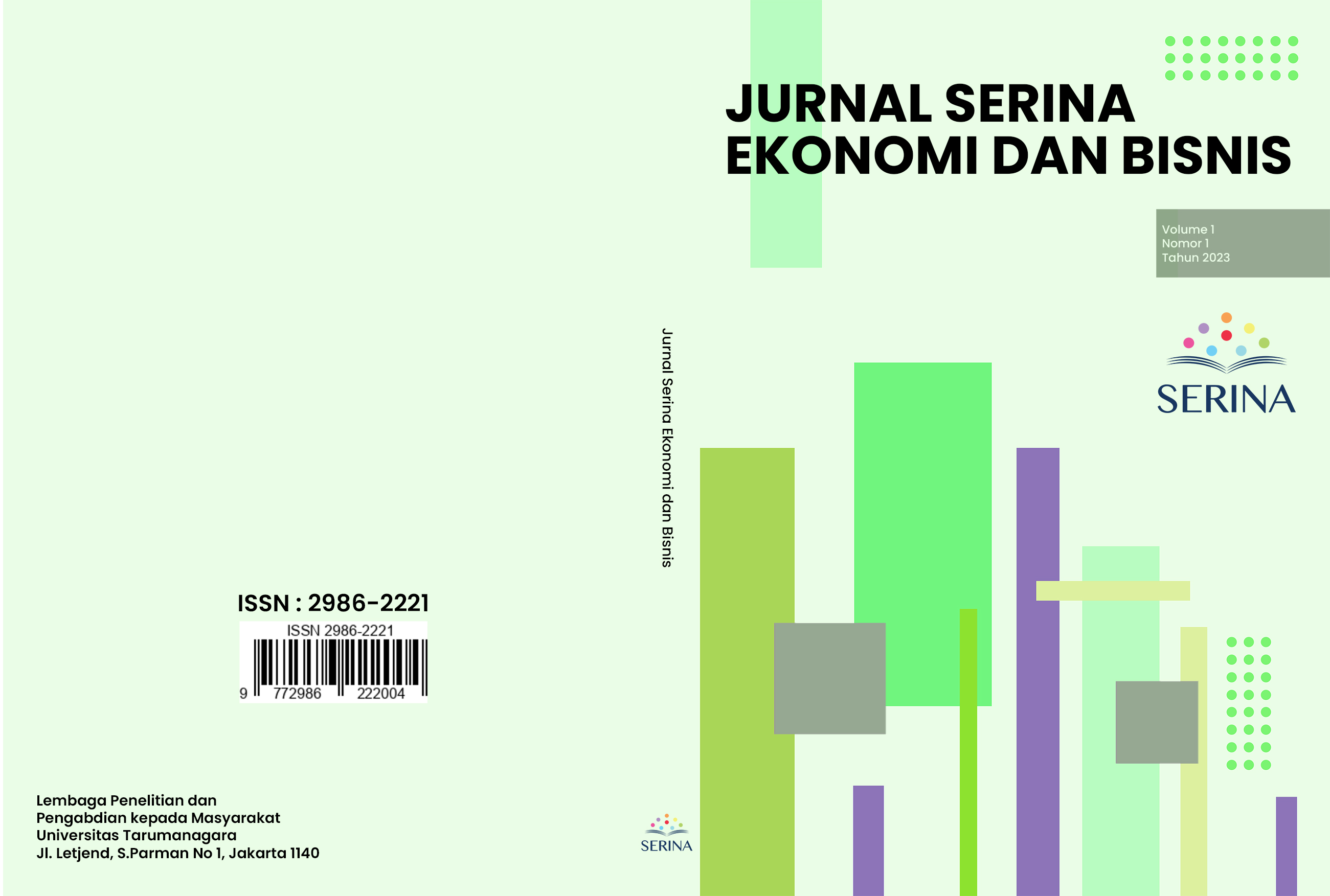PENGARUH STRATEGI PEMASARAN VIRAL YANG MEMPENGARUHI NIAT BELI BAGI KONSUMEN SKINTIFIC
Main Article Content
Abstract
This research is conducted the ef ect of viral marketing strategies on Skintific's purchase intention for consumers:
the value of fish as mediation. This research used non-probability sampling through convenience sampling to obtain
228 respondents who are Skintific skincare users. Data collection was carried out online by distributing
questionnaires via Google Forms. Data was processed using the Partial Least Square Structural Equation Modeling
(PLS-SEM) method with SmartPLS 4.0 software. The results showed that viral marketing strategies in the form of
Entertainment, Informativeness and Source Credibility had a positive and significant ef ect on Advertisement Value,
while there was a negative and insignificant ef ect of viral marketing strategies on Advertisement Value. Besides
that, there is a positive and significant influence from Entertainment and Informativeness on Purchase Intention.
And Advertisement Value mediates the two relationships between Entertainment and Purchase Intention Skintific
positively and significantly, Advertisement Value also mediates the two relationships between Source Credibility and
Purchase Intention Skintific positively and significantly, Advertisement Value also mediates both relationships
between Irritation and Purchase Intention Skintific negatively and not significant, and Advertisement Value also
mediates the relationship between Source Credibility and Purchase Intention Skintific in a positive and significant
way.
Article Details
Section

This work is licensed under a Creative Commons Attribution-NonCommercial-ShareAlike 4.0 International License.
References
Abbasi, A. Z., Schultz, C. D., Ting, D. H., Ali, F., & Hussain, K. (2022). Advertising value of
vlogs on destination visit intention: the mediating role of place attachment among
Pakistani tourists. Journal of Hospitality and Tourism Technology,13(5), 816-834.
https://doi.org/10.1108/JHTT-07-2021-0204.
Chen, W. K., Ling, C. J., & Chen, C. W. (2022). What affects users to click social media ads and
purchase intention? The roles of advertising value, emotional appeal and credibility. Asia
Pacific Journal of Marketing and Logistics,
https://doi.org/10.1108/APJML-01-2022-0084
Fournier, S. (1998). Consumers and their brands: Developing relationship theory in consumer
research. Journal of Consumer Research, 24(4), 343–373. https://doi.org/10.1086/209515.
Hendijani, F. M., & Marvi, R. (2020). Viral marketing and purchase intentions of mobile
applications users. International Journal of Emerging Markets, 15(2), 287-301.
https://doi.org/10.1108/IJOEM-06-2018-0291.
Hosseinikhah, C. S., & Mirabolghasemi, M. (2022). The role of viral marketing strategies in
predicting purchasing intention of eco-labelled products. Journal of Islamic Marketing,
(5), 997-1015. https://doi.org/10.1108/JIMA-04-2020-0102.
Kotler, P. (2016). Marketing management 15th edition. Pearson Education Limited.
Lee, E. B., Lee, S. G., & Yang, C. G. (2017). The influences of advertisement attitude and brand
attitude on purchase intention of smartphone advertising. Industrial Management & Data
Systems, 117(6), 1011-1036. https://doi.org/10.1108/IMDS-06-2016-0229.
Li, R., Vafeiadis, M., Xiao, A., & Yang, G. (2020). The role of corporate credibility and
bandwagon cues in sponsored social media advertising. Corporate Communications: An
International Journal, 25(3), 495-513. https://doi.org/10.1108/CCIJ-09-2019-0108.
Muda, M., & Hamzah, M.I. (2021). Should i suggest this youtube clip? The impact of ugc source
credibility on ewom and purchase intention. Journal of Research in Interactive
Marketing, 15(3), 441-459. https://doi.org/10.1108/JRIM-04-2020-0072.
Mustafi, M.A.A., & Hosain, M.S. (2020). The role of online advertising on purchase intention of
smartphones: mediating effects of flow experience and advertising value. Journal of
Contemporary Marketing Science, 3(3), 385-410.
https://doi.org/10.1108/JCMARS-05-2020-0024.
Seni, N. N. A., & Ratnadi, N. M. D. (2017). Theory of planned behavior untuk memprediksi niat
berinvestasi. E-Jurnal Ekonomi dan Bisnis Universitas Udayana, 12(6).
Priporas, C. V., Kamenidou, I. E., Nguyen, N., & Shams, R. (2020). The impact of the
macro-environment on consumer scepticism towards cause-related marketing: Insights
from an economic crisis setting. International Marketing Review, 37(5), 841-861.
https://doi.org/10.1108/IMR-04-2019-0124.
Sari, D. K., Suziana, S., & Games, D. (2020). An evaluation of social media advertising for
muslim millennial parents. Journal of Islamic Marketing, 12(9), 1835-1853.
https://doi.org/10.1108/JIMA-02-2020-0055.
Shukla, A., Sharma, N.K., & Swami, S. (2011). Web site classification on information and
entertainment profiles. Journal of Advances in Management Research, 8(1), 148-157.
https://doi.org/10.1108/09727981111129345.
Spears, N., & Singh, S. N. (2004). Measuring attitude toward the brand and purchase intentions.
Journal of Current Issues and Research in Advertising, 26(2), 53–66.
https://doi.org/10.1080/10641734.2004.10505164.
Sugiyono, S. (2016). Metode penelitian dan pengembangan (Research and development).
Alfabeta.
Sunyoto, D. (2013). Dasar-dasar manajemen pemasaran: konsep, strategi, dan kasus. CAPS.
Wu, R., Wang, G., & Yan, L. (2020). The effects of online store informativeness and
entertainment on consumers’ approach behaviors: Empirical evidence from China. Asia
Pacific Journal of Marketing and Logistics, 32(6), 1327-1342.
https://doi.org/10.1108/APJML-03-2019-0182.
Xiong, L., & Hu, C. (2010). Harness the power of viral marketing in hotel industry: a network
discount strategy. Journal of Hospitality and Tourism Technology, 1(3), 234-244.

